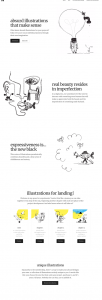Despite What You Think, Brands Have An Eye On Consumer Needs
What else changed during the pandemic? Consumer perception of generic products, for starters.
With two-thirds of shoppers reaching the conclusion that store brands are just as high-quality as name brands, and another third ranking private-label higher in quality than name brands, according to data released Wednesday, private labels have secured a spot on the top shelf.
These days, generic can be the same as the name-brand products. Many of Costco’s products are made by big names and rebranded as Kirkland products to be sold at the big-box retailer. For example, closely look on a 2.5 lb. bag of Kirkland coffee beans to see a “Custom roasted by Starbucks” stamp.
In addition to enhanced customer perception, private-label products benefit the retailers selling them. Profit margins are higher, operating costs are lower, and shopper support is stable.
Bazaarvoice, which focuses on product reviews and user-generated content (UGC) solutions, released its annual Shopper Experience Index on Wednesday.
The report explores how global consumer shopping preferences and behavior continue to evolve and how businesses should adapt to these trends.
The survey aggregates responses from more than 6,000 shoppers in the United States, Canada, Mexico, the United Kingdom, France, Germany, Spain, and Australia.
No doubt the impact of 2020 and the pandemic will last for years. The Bazaarvoice Network of 11,500 brands and retailers saw order count rise year-over-year by 39%, and review count increased 44% during the same time frame.
Despite the changes and challenges, shoppers worldwide think differently. In the U.S., for example, more than 75% of U.S. shoppers say they always read reviews. While there is a slight preference to shop online (51%) for the upcoming year, rather than in stores (49%), U.S. shoppers are willing to shop in-store with the right precautions.
More than 60% of shoppers are open to new products, but 62% said they would switch products if the quality changes. More than half want a mix of UGC and professional photography on product pages to help them decide on new products.
In the UK, 55% of shoppers would pick shopping digitally over in-store in 2021. With multiple lockdowns and having one of the more mature ecommerce infrastructures, it’s not surprising that these shoppers have adapted to purchase more online. During the pandemic, 28% said researching on brand and retailer websites and buying there with delivery was their preferred shopping method.
Canadian shoppers are most likely to say they always read reviews, regardless of price point. About 51% said they would rather shop in stores.
French shoppers are easily the most price-motivated shoppers. More than 40% of these shoppers trust translated reviews, and 52% always read reviews no matter what the price point.
Social commerce really excelled in 2020. Nearly half of the global population uses at least one social media platform, and not just for keeping in touch with friends. Some 32% of U.S. shoppers said they use social media to discover new products to buy. In fact, one in three shoppers made a purchase on social media in the past year.
When broken down by age, that number climbs to 43% of 18-24-year-olds and 47% of 25-34-year-olds. As this trend is only set to increase, brands to consider what customers share with them on social media and use it elsewhere, especially as many can’t or won’t go in-store to see products for themselves.
Ecommerce continues to climb as well. In 2020, online shopping went from a nice option to have, to a necessity. In fact, 36% of American shoppers say they’ve reduced their in-store trips, 18% said they’re only going in-store for essentials, and 20% said they are not shopping in-store at all right now. T
This is reflected in Bazarvoice’s network of more than 11,500 brands and retailers, where online ordering was up 39% year-over-year in 2020 globally.
Shoppers, however, are not ready to give up brick-and-mortar shopping just yet. Some 49% of shoppers would choose in-store shopping over buying online this year.
(52)







